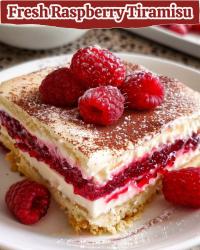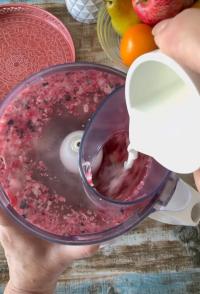Copy Link
Add to Bookmark
Report
HOMEBREW Digest #2354

HOMEBREW Digest #2354 Fri 21 February 1997
FORUM ON BEER, HOMEBREWING, AND RELATED ISSUES
Digest Janitor: janitor@brew.oeonline.com
Many thanks to the Observer & Eccentric Newspapers of
Livonia, Michigan for sponsoring the Homebrew Digest.
URL: http://www.oeonline.com
Contents:
re:Hop Characteristics, protocols (Charles Burns)
competition announcement (rcolaizzi)
I withdraw my Pediococcus and Lactobacillus Question! (kevin)
Stupid Brewery trick #1221 (Jason Henning)
Re: Skunkability HBD #2351 (Cat Tambling & James Buttitta)
Stainless Primary (PVanslyke)
re: best dog for homebrew (PVanslyke)
enough already (ELVIS942)
Basement Cook tops (Todd Wilson)
Candi Sugar ("Bill Giffin")
Flames and WAGS (eric fouch)
Re: dark candi sugar/beer-clean ("Michael Switzer")
bitterness and SO4 (korz)
Follow-up to my WAG (eric fouch)
Poison Frog Kiwi,Skunking, question protocol ("David R. Burley")
RE:Portable Co2 solutions (Matt Gadow)
cream (Greg Moore - SMCC BOS Hardware Engineering)
Beer Yeast Bread (Chris Carolan)
Searching the Archives (Charles Burns)
Inverted Modified Step Decoction Mashing (Paul Niebergall)
Superior Lager Yeast Australian (Steven Ketcham)
bottle conditioning/hop aroma/FWH bitterness (korz)
scaling commercial brews/home flaking/CO2 capturing (korz)
NOTE NEW HOMEBREW ADDRESS: brew.oeonline.com
Send articles for __publication_only__ to homebrew@brew.oeonline.com
(Articles are published in the order they are received.)
Send UNSUBSCRIBE and all other requests, ie, address change, etc.,
to homebrew-request@brew.oeonline.com BUT PLEASE NOTE that if
you subscribed via the BITNET listserver (BEER-L@UA1VM.UA.EDU),
you must unsubscribe by sending a one line e-mail to listserv@ua1vm.ua.edu
that says: UNSUB BEER-L
Thanks to Pete Soper, Rob Gardner and all others for making the Homebrew
Digest what it is. Visit the HBD Hall of Fame at:
http://brew.oeonline.com/
If your account is being deleted, please be courteous and unsubscribe first.
Please don't send me requests for back issues - you will be silently ignored.
For "Cat's Meow" information, send mail to lutzen@alpha.rollanet.org
ARCHIVES:
An archive of previous issues of this digest, as well as other beer
related information can be accessed via anonymous ftp at
ftp.stanford.edu. Use ftp to log in as anonymous and give your full
e-mail address as the password, look under the directory
/pub/clubs/homebrew/beer directory. AFS users can find it under
/afs/ir.stanford.edu/ftp/pub/clubs/homebrew/beer. If you do not have
ftp capability you may access the files via e-mail using the ftpmail
service at gatekeeper.dec.com. For information about this service,
send an e-mail message to ftpmail@gatekeeper.dec.com with the word
"help" (without the quotes) in the body of the message.
----------------------------------------------------------------------
Date: Tue, 18 Feb 97 16:35 PST
From: cburns@egusd.k12.ca.us (Charles Burns)
Subject: re:Hop Characteristics, protocols
Bruce (from New Zealand) asks in HBD 2351 about hop characteristic information.
Try reading "Using Hops" by Mark Garetz. While it may not be the end-all of
hop information, there's an awful lot in there. Certainly a good description
of how most hops are used and what substitutions might be good (or not
good). I find it a very useful reference.
Online (www) see "http://realbeer.com/hops/"
On protocols - maybe you don't see so many replies because some of us get
flamed personally when we try to help. There have been some really
unreasonable statements made here that don't increase the information base,
all they do is make people feel bad.
Charley
------------------------------
Date: Wed, 19 Feb 1997 00:51:30 +0000
From: <rcolaizzi@worldnet.att.net>
Subject: competition announcement
The Three Rivers Alliance of Serious Homebrewers
present T.R.A.S.H. VII, an open, all category homebrew competition.
Judging will be March 22 at the Foundry Ale Works in Pittsburgh, PA
Entries due by March 15
We expect our usual sponsors to be as generous as always with great prizes.
Information available from the web, http://ralph.pair.com/trashvii.htm,
or Call Don Van Ollefen,organizer, (412) 492-7197
There _will_ be a quick turn around on results this year.
Interested judges should call Rick Schutte, judge director, (412)766-6861
------------------------------
Date: Tue, 18 Feb 97 20:04:51 CST
From: kevin <kevin@mspusa.com>
Subject: I withdraw my Pediococcus and Lactobacillus Question!
Ok, Ok...
I retract my questions! After getting crucified to this extent,
someone might start a religion after me, so Enough Already.
(Gawd! I feel like a lager brewer who dared to have chill haze! My
questions won=12t really get me sent to hell, will they? Gulp)
I apologize for asking. I am sorry. It will never happen again.
After I read the HBD faq, I thought people would be civil. Now I
know better. Please feel free to NOT respond here nor through
private e-mail=17that is not what The Homebrew Digest is for.
Have a nice day.
-kls----- ----- ----- -----
=3D=3D=3D=3D=3D =3D=3D=3D=3D=3D =3D=3D=3D=3D=3D =3D=3D=3D=3D=3D
kevin@mspUSA
newt to the right of me
bubba to the left
here I am,
stuck in the middle with you
=3D=3D=3D=3D=3D =3D=3D=3D=3D=3D =3D=3D=3D=3D=3D =3D=3D=3D=3D=3D
------------------------------
Date: Tue, 18 Feb 1997 20:27:04 -0800
From: Jason Henning <huskers@cco.net>
Subject: Stupid Brewery trick #1221
I haven't read about an idiot doing this yet so I thought I'd pass it
on.
I use a refridgeration heat exchanger for a counter-flow chiller
(anyone besides Dave call it counter current?). It's kinda like
Heart's Superchiller. On one side, it has the water-in port and the
cooled wort-out port. One the otherside, it has water discharge port
and hot wort-in port. The ports are 3/8 copper. I have a flare
fitting and an adapter to to a hose on the water-in port and use 3/8
poly vinyl tubing on the other three ports.
I hook up the c-f , then I throw the discharge hose in the bushes and
turn the water on slowly. The water tap is out of sight of the brewery.
I get the water at the right rate by watching the hose in the bushes.
I'm watching and watching and no water. Come on, what's goin on! Maybe
the discharge hose blew off and water all over the garage. Nope.
But looking closer, I've hooked the water discharge and the
wort-in backwards. I look in the kettle and there is at least an
extra gallon of wort!
I was brewing a low gravity beer to start with, ~1.033 calculated, but
I guess 1.020 will really be quaffable! I was making this mostly to get
a yeast cake for my garage famous brown ale but it's turning out to be
a five gallon starter!
Cheers,
Jason Henning
Big Red Alchemy and Brewing
huskers@cco.net (spamfree e-address)
------------------------------
Date: Wed, 19 Feb 1997 13:20:51 GMT
From: mugwert@ime.net (Cat Tambling & James Buttitta)
Subject: Re: Skunkability HBD #2351
sdginc@prodigy.com ( STEVE GARRETT) wrote:
>Subject: Skunkability
>
>I can't explain why. The Zymurgy Light and Beer article last year=20
>didn't >help - in fact seemed to indicate that since the hop alpha acids=
are=20
>isomerized during the boil, it should be skunkable (did I just invent=20
>a new word?).
>
Perhaps any mercaptans formed during the light struck boil are simply
boiled away (mercaptans are volitle gases) and so the beer is not
effected.
Jim
mugwert@ime.net
-
>
>
------------------------------
Date: Wed, 19 Feb 1997 08:39:53 -0500 (EST)
From: PVanslyke@aol.com
Subject: Stainless Primary
good morning,
Firstly, thanks to all for the reply on adding a thermometer to my primary
fermentation tank. Responses ranged from the very simple (stick on
thermometer) to high tech (thermocouple/digital).
Secondly, because of the many responses I received concerning the source of
my tank, etc., I have decided to post the response here.
Stainless steel primary fermentor.
I have to preface this by saying that I grew up on a dairy farm, worked with
my family there, and still live very close.
Before there were milking parlors, and before there were pipeline milking
systems, there was something called a 'dumping station'. This piece of
equipment was wheeled out of the 'milk room', 'milk house', whatever local
farmers might call it, twice a day. The dumping station had either an
electric motor for pumping or was connected to a vacuum system. The dumping
station consisted of a stainless, two-wheeled frame, and a tank with a lid.
The milk was dumped from the milking machine into the tank and was pumped
through plastic line back to the milk house and ended in the bulk tank where
it was chilled.
The small tank on the dumping station was what caught my interest. This tank
hold just 10 gallons, has a slightly funnel shaped bottom with a 1/2 inch
drain. What I did was have a 1/2 inch 90 degree stainless fitting TIGed onto
the drain. This allowed me to screw on a 6inch stainless nipple, ball valve,
and barbed hose connector; all 1/2 inch dia.
I utillized the original stand, trimming off all the unnecessary parts,
leaving a very stable base which elevates the whole tank just enough above
the counter top to clear the bottom fittings.
The original lid works well as is. I have always done a simi-open primary
ferment. That is, no fermentation lock. Originally in a plastic trash
container with plastic wrap keepin out all the large stuff. After all, the
surface of the fermenting wort is covered in a layer of CO2.
In a day or two, I will be draining the beer into a soda keg for a two week
rest before carbinating and drinking.
I got the original tank and lid and stand from the farm - we never throw out
the important trash! A friend, who is certified in food-grade stainless did
the welding for a swap and the fittings cost me about $12.00. I have been
checking around the area and other dairy farmers might still have a dumping
station gathering dust. I also purchased a tank and lid (no stand - although
it was available) for $10.00 from the local feed store (long family/community
relationship) which also deals in dairy equipment.
Have fun
Paul VanSlyke >> brewing and relaxing in Deposit, NY
------------------------------
Date: Wed, 19 Feb 1997 09:23:26 -0500 (EST)
From: PVanslyke@aol.com
Subject: re: best dog for homebrew
Good morning,
There has been some talk here as of late on the subject of the best breed of
dog for homebrewing.
Although I have never tried a dog in my homebrewing process, my gut feeling
would be for a smaller breed. Unless you are using the dog in extract form,
the larger breeds just would not fit conveniently into the brew pot.
What? ok, ok... I'm outa here
Paul VanSlyke >> brewing and relaxing in Deposit, NY
------------------------------
Date: Wed, 19 Feb 1997 09:57:41 -0500 (EST)
From: ELVIS942@aol.com
Subject: enough already
I'm a newbie (6 malt extract batches and some steeping of grains), so I
thought I would subscribe to the homebrew digest.... I'm wondering what the
usefulness of it is when people like Dave and Al K. use it as a forum to
bicker like little boys over the intricacies of sulfates or botulism or
anything else they can find to argue about. Frankly, it detracts from the
hobby that I'm trying to learn about, so KNOCK IT OFF! Who cares!? Unload
your homebrewers ego and let's have some interesting info passed. It makes
sense to me that whether magnesium or calcium causes bitterness or not is a
matter of individual taste. Then point is, experiment with what you like and
then make up your own opinion. Enough already...
------------------------------
Date: Wed, 19 Feb 97 10:01 EST
From: Todd Wilson <0005714841@mcimail.com>
Subject: Basement Cook tops
I bought a house this past weekend with an unfinished basement
that I would like to turn into my brewery. The heater and stove
for this house run on natural gas and I was wondering what the
chances are of me killing myself by installing a gas cook top in
the basement and tying into the gas line? I am not so much worrying
about fire but fumes. There are two small windows but no exhaust
fan. I have read all of the threads on propane use indoors and
I realize the danger but I am unsure about natural gas fumes.
I am really abusing my current kitchen with my brewing so I would
like to create a wort friendly environment in my new home without
killing myself.
TIA. Private e-mails are fine. I will post a summary.
Todd
5714841@mcimail.com
------------------------------
Date: Wed, 19 Feb 1997 11:16:48 +0000
From: "Bill Giffin" <billgiffin@maine.com>
Subject: Candi Sugar
Good morning all,
>>Al K said:
I don't think foil is a good idea because it will probably rip when
you try to remove the sugar from the foil.
<<
The foil didn't rip on me, but then I have only done it a couple of times.
Pouring the molten sugar directly into the kettle full of wort didn't
splatter hardly at all and if you pour the sugar into the kettle
slowly you won't have a problem.
Bill
------------------------------
Date: Wed, 19 Feb 97 12:03 EST
From: eric fouch <S=eric_fouch%S=fouch%G=eric%DDA=ID=STC021+pefouch%Steelcase-Inc@mcimail.com>
Subject: Flames and WAGS
Date: Wednesday, 19 February 1997 11:53am ET
To: STC012.PREQUEST@STC010.SNADS
From: Eric.Fouch@STC001
Subject: Flames and WAGS
In-Reply-To: The letter of Wednesday, 19 February 1997 8:07am ET
HBD-
The HBD seems to be taking another nasty turn and going down with
flames. There are a few people here with larger than necessary self-images,
but these people are disseminating large quantities of useful information
and improving homebrewing on a large scale. If somebody wants to think he has
spelled complete correctly by spelling it compleat, then claiming it wasn't
misspelled because they might spell it that way in Britain, who cares?
It seems lots of people are just waiting to jump on any mistake they perceive
to be made by certain individuals. This, if I may break out my amateur
psychologists couch, is due to an inferiority complex. Most of us are able to
see beyond this sophomoric behavior. I also read the Lambic Digest, and they
don't have this problem. Why? Read on...
- -----------------------------------------------------------------------------
Date: Sat, 7 Dec 96 12:04:15 PST
From: ******@********.*** (**** *****)
Subject: The flame war WILL STOP NOW]
Folks,
[Appologies to those as annoyed as I am about having
to put up with the flame war.]
Stop it] I don't want to see any more flamage about
******* ********, or ** ******** post or any of the related
postings. Its a pointless waste of band width. Those involved
are welcome to start their own digest (flame-me@twit.com?) if you
must continue.
To the point of advertising, the Lambic Digest (i.e. me)
has always asked for & received the cooperation of commercial
(interests) wanting to post messages to the digest. This
cooperation takes the form of _MY_ approving/rejecting
advertising materials published here based on _MY_ judgment
of the appropriateness of the advertisement with respect to
the content of the digest.
I did not receive a copy of ********* posting for review prior to
posting, but I decided not to take issue with this since,
in my opinion, it is well within the interests of the general
readership, and because ******* is a long time subscriber/contributor
to the digest who should know what the general readership is
interested in.
Should anyone care, I have never found it necessary to turn down
commercial announcements in the past, though I have worked with the
advertiser to put them in a briefer and/or more appropriate form.
I have never accepted any paid advertising and I don't plan to start.
_*I*_ do reserve the right to turn down requests for advertising
and can enforce this through the removal of the mailing list in
its entirety. (not something I'd do lightly)
If anyone has a problem living under a (-8 relatively 8-) benevolent
dictatorship I'll be more than willing to remove them from the digest
and/or discuss this off-line.
- --Mike
- -------------------------------------------------------------------------
The names have been deleted to protect the indignant.
I'm not suggesting the HBD needs a stronger hand in the "janitor ship",
but perhaps if we ignore the occasional shark bite or pomposity, the offender
will get bored and stop or move along.
That being said, I willingly open myself up to having my observations and
suppositions shoved back down my throat by anyone feeling the need to prove
they know more about mercaptans than I do by commenting and/or criticizing the
following WAGS on skunky manifestations. I ask only that you take into
account the fact that I finished my chemistry degree 10 years ago, and have
since been working in the manufacture and evaluation of industrial furniture.
Anyway, mercaptans, or thiols, are basically counterparts of alcohols in that
they are structurally the same, except that the oxygen atom has been
replaced with a sulfur atom. The name mercaptan is from the Latin,
mercurium captans, or "capturing mercury". Seems mercaptans are particularly
good at precipitating heavy metal ions out of solution. I am not familiar
with the term "prenyl" so I am not sure of the structure or how stable this
molecule would be. At any rate, "prenyl" mercaptan should be very similar to
"prenyl" alcohol, with the aforementioned swap of a sulfur for an oxygen
molecule.
Now for some WAGS: Perhaps the skunky mercaptans form an unstable heavy metal
complex, precipitating them out of the beer. Upon exposure to sunlight, these
complexes break down, freeing the mercaptans to go about their odiferous
activities, being nasaly objectionable. Subsequent shading may allow the
complexes to reform.
The availability of heavy metals would be the trick here. Hopefully mercury is
not readily available, but some copper or calcium or magnesium complexes may
suffice. An even less likely WAG would be that the mercaptan and the analogous
alcohol molecule form a resonant reaction, bouncing back and forth between
mercaptan and alcohol, driven by the energy in sunlight. Far less likely, as
the alcohol and the mercaptan are probably pretty stable molecules, but I
thought I'd mention it, because by now, I'm enjoying "hearing" myself "talk",
a sure sign that it's time to shutup.
Eric Fouch
Shuttin' Up
Bent Dick YactoBrewery
Kentwood MI
------------------------------
Date: Wed, 19 Feb 1997 12:15:35 -0500
From: "Michael Switzer" <switzer@cpp.msu.edu>
Subject: Re: dark candi sugar/beer-clean
Spencer writes:
>The obvious solution is to pour it out onto a greased marble slab.
>Greased aluminum foil will do in a pinch. But don't set the foil
>directly on your "Formica(tm)" countertop, unless you want to scorch
>it. Melted sugar is very hot.
>
>You could try doing without the grease, but then separating it from
>the pouring surface becomes difficult.
When I make rock candy I just pour it out on a cookie sheet covered
with powder sugar. This works very well and a slight flex of the
cookie sheet is all you need to seperate the candy from the sheet.
Michael Switzer
Campus Park & Planning
(517)355-9582
switzer@cpp.msu.edu
switzer8@pilot.msu.edu
http://pilot.msu.edu/user/switzer8
------------------------------
Date: Wed, 19 Feb 1997 12:14:39 -0600 (CST)
From: korz@xnet.com
Subject: bitterness and SO4
As you will recall, there was a long debate raging here over what exactly
increases bitterness, Mg? SO4? MgSO4? I had taken the position that it
was the SO4 that was causing the *hop* bitterness to be *percieved* as
more bitter, whereas others (like Dave Burley, who was polite, and others
who will remain namecallers) felt that it was the Mg or the MgSO4 salt
itself that produced the bitterness.
Unfortunately, my test of the bitterness of MgSO4 in water was dismissed,
although I felt it was a simple and easily reproducable experiment which
showed that MgSO4 itself is not particularly bitter in the concentrations
we normally encounter in beer.
Nonetheless, some were still skeptical and as Dave said in HBD: without
references to back up my position, he would have to consider my view to
be contrary to "documented common beliefs."
Ironically, I'm the one usually screming for references, but frankly, I
really thought my assertion was quite within "common knowledge" and there
were plenty of books to back this up.
I noticed the effect of sulphate on bitterness in my own brewing long
before I read it in any book. My first book was Charlie's CJoHB and it was
quite nebulous about the effect of sulphate. I never really looked for
proof of this effect, because one taste is worth a thousand words.
So, in response to Dave's request:
"[Sulfate] draws increased bitterness from the hop [sic] during boiling
and contributes a drying bitterness to the beer flavor."
-- _The Homebrewer's Companion_, Charlie Papazian, p.76.
"Sulfate is very important in this respect [affecting beer flavour],
imparting a dryness to the beer which accentuates the hop bitterness
in a pale ale."
-- _Pale Ale_, Terry Foster, p.59.
"Sulfate (SO4) Gives beer a dry, fuller flavor, enhances hop bitterness."
-- _Beer From Water_, Jon Rodin & Glenn Colon-Bonet, Zymurgy, Vol. 14, No. 5,
Winter 1991, p.29.
"Sulfate... is thought to contribute to a 'drier' or more 'bitter' flavor."
-- _The Practical Brewer_, published by the MBAA, p.18. [Incidentally,
under magnesium, there was no flavour effect mentioned.]
"Luers divided a sample of liquor and and neutralized one portion with
sulphuric acid and the other with hydrochloric acid. A very complete
analysis was carried out on the worts mashed with these two differently
treated samples, as well as on the beers brewed from them. Although
the taste of the beers was different, the analytical differences were
insignificant.
"The author [DeClerck] has investigated the effect of ions on the flavour
of beer by keeping the pH constant in a series of comparative mashes.
This method gives a clearer picture of the influences of the individual
ions. From various investigations and empirical data available on the
effect of salts in liquor on the quality of beer, the following conclusions
may be drawn:
"Sulphate ions give beers with a drier and more bitter flavour; whereas
chloride ions give beers with a mellower and softer palate."
[He then talks about iron, nitrites, nitrates, and silica, and most
interestingly, does not even mention magnesium.]
"Sodium ions give a disagreeable flavour to beer, and liquors with a high
sodium bicarbonate content are definitely to be avoided on account of
their high alkalinity, but even when neutralized the flavour of the beer
is poor." -- _A Textbook of Brewing_, Jean DeClerck, Vol.1, p.79.
I also wanted to check _Brewing Science_, but alas, "Water" is in Volume 1,
which out-of-print, and I have only Volumes 2 and 3.
So there you have it. In closing, I'd like to add that I'll be visiting
England in a few weeks and will be staying not far from Epsom, so I'll
ask a few of the locals their opinion on the matter ;^). Should my plane
crash, might I suggest that Bill Giffin and Scott Dornseif should top the
suspect list...
Al.
Al Korzonas, Palos Hills, IL
korz@xnet.com
------------------------------
Date: Wed, 19 Feb 97 13:39 EST
From: eric fouch <S=eric_fouch%S=fouch%G=eric%DDA=ID=STC021+pefouch%Steelcase-Inc@mcimail.com>
Subject: Follow-up to my WAG
Date: Wednesday, 19 February 1997 1:06pm ET
To: STC012.PREQUEST@STC010.SNADS
From: Eric.Fouch@STC001
Subject: Follow-up to my WAG
In-Reply-To: The letter of Wednesday, 19 February 1997 8:07am ET
HBD-
I just remembered someone (sorry) mentioned adding zinc to inhibit skunking.
WAG #1 would support that practice (but not condone it), as zinc ions would
strongly bind (chelate) with the mercaptans and precipitate out of the
solution (your beer). If magnesium or calcium complexes are acting like
heavy metal ions and complexing weakly with the mercaptans, we may have a
reversible reaction.
ATTENTION] THIS IS A WAG. THIS IS ONLY A WAG. HAD THIS BEEN A UNIVERSAL
TRUTH YOU WOULD HAVE BEEN NOTIFIED OF THE NECESSARY CORRECTIVE ACTION.
Eric Fouch
Your Source for Quality Mercapto-chelants
Bent Dick YactoBrewery
Kentwood Mi
------------------------------
Date: 19 Feb 97 13:44:43 EST
From: "David R. Burley" <103164.3202@CompuServe.COM>
Subject: Poison Frog Kiwi,Skunking, question protocol
Brewsters:
Phil Wilcox descibes his method for deciding how much sugar was in his Kiwi
syrup and went through some gyrations to figure out how measure out some dried
malt extract.
Instead of measuring dried malt extract by volume why not weigh it? If you
don't have a balance, remember that two tablespoons of water weigh one ounce, so
set up a balance with small paper cups on either end of a ruler taped to a
pencil (as a fulcrum) crossways at the middle mark. Also, I believe a nickle
(US 5 cent piece) is 5 grams, so open up your piggy bank and weigh away. To
check this, an ounce of water should weigh approximately six nickles. A medicine
teaspoon is 5 mls and 5 grams of water.
> I diluted the 50 ml syrup with 50 ml water and took the SG. =1.111 ! (Temp
> Adjusted) So im figuring on about 54 Degrees Plato for the syrup.
Did you take into account the correction for the depression of the SG due to the
alcohol content using real attentuation type calculations? Remember
water/alcohol solution has a lower density than water alone.
To do this calculation you need to know the alcohol content of the liqueur ( on
the bottle). Divide any proof figure by 2 to get ABV %. If you dilute it more
to something like 1.02 or so the correction is not large and will probably be OK
for your calculations since the ABV% is probably 25% in the liqueur. Try 5 - 10
mls of the syrup and 50 mls of water.
> 70.625g x (70ml/130ml) x (100g syrup/54g cane sugar)=70.423 g of syrup needed
> to prime a 5 gal batch of beer that is to be Kegged. So how did I do?
Well I guess I don't understand what you're doing since you added this to the
secondary where it will ferment out any sugar you added. You really didn't need
all these gyrations. If you were intending on using the syrup to charge your
keg ( which is what I originally thought) that is a different matter and you
should correct your calculations for alcohol content or you should start over as
suggested above.
>> the original amount of syrup I quickly concluded that 70.4 g of syrup wasnt
> going to give me much of a Kiwi flavor.
> So I glugged in 200 ml of syrup into
> the secondary on Sunday hoping it would ferment the sugar and leave the
> flavor.
Why not do this on a small scale trial first, rather than risk your whole batch?
What if the taste was too strong?
> Question: what effect is the new sugar going to have on the 1 day old
> Iningslass which had already started to amass white globby things floating in
> the secondary.
I assume you had a smooth solution of isinglass made up with acidic cold water
in your refrigerator over several days as the manufacturer suggested? Or was it
a ready dispersed solution? It should simply flock the yeast and not leave
globby things floating around.
- ---------------------------------------------------------
AlK says:
> mercaptan. I thought said you read the article in Zymurgy... I'm certain
> that non-radiative energy transfer was at least mentioned in there, no?
Peter Ensminger mentioned the posssibility of flavins as absorbers of light
followed by energy transfer, but most articles ( and his diagram) I have read
seem to imply, (perhaps without stating it) that the iso-humulone absorbs the
light directly. Iso-humulone does not absorb visible light, so it cannot be
involved directly. Which is my point.
Without really doing simple studies like dilution studies, free radical
trapping, wavelength dependencies, etc to elucidate the mechanism I don't see
how energy transfer versus free radical mechanisms can be suggested. I admit to
not being as familiar with the professional literature as I would like to be on
this subject.
>Inform us as to where you read that the hop variety
> is a factor.
I honestly don't remember, but I have read the suggestion that certain of the
hops, and as I remember it ,Saaz has this tendency to give a funky taste on
aging that may be confused with skunky. My experience of late has been that the
PU I've been tasting is much better. Perhaps as a result of higher consumption
rate, since I don't believe thay have radically changed their packaging. I have
had LOUSY PU from the keg which I have on some occasions thought was poor
housekeeping. but after insisting on drawing a house pint, I still had the same
problem which some people might call skunky ( but not I). PU cannot get skunked
by light inside a barrel and it was not a stale taste.
My only call is for a standard we can all use. Any suggestions?
To briefly restate my position: I believe that a beer can get skunked by light
through colored soft glass, given long enough, but I also believe that what
some people call skunked is not, based on my experience. Skunking experiments
should be done with beers at normal drinking temperatures and not confuse a
change in aroma of a beer on warming up in the sunlight in the presence of
oxygen with skunking.
I'm willing to be convinced with the proper set of experiments or references.
- ---------------------------------------------------
George Dietrich says about AlK's observation that holding a beer at 50F for two
weeks seems to make skunked beer become unskunked that: Experience Counts for
Something!
> If someone comes forward and says that a particular event occurs and will
> always occur without exception then I would expect to see some documentation
> in the form of an experiment, history or whatever. But all we had here was
> an observation.
Yes, but a very important one. It is the first time I have EVER heard that
prenyl mercaptan disappeared spontaneously. This is startling and would be of
great interest to the brewing industry as well as to me. Rather than quizzing
Al on his evaluation procedure, etc. I simply wanted more information. That's
all I asked for. No disrespect intended, as your comment seemed to imply I did.
How would you suggest I ask someone for more data in the future so you won't be
offended?
- -----------------------------------------------
Keep on brewin'
Dave Burley
Kinnelon, NJ 07405
103164.3202@compuserve.com
Voice e-mail OK
------------------------------
Date: Wed, 19 Feb 1997 10:46:36 -0800
From: Matt Gadow <mgadow@ix.netcom.com>
Subject: RE:Portable Co2 solutions
Try Williams brewing (not affiliated, etc.) - they sell a small (pocket
sized) CO2 dispenser..I don't have Williams number - but I'm sure they
have an 800 directory listing - (in Northern Calif.)
I bought one of these things - But haven't needed it yet... - But it
looks like it will work great - it uses small co2 cartridges like those
used for bike tires, air guns, etc.
In fact, I found the Co2 cartridge / and filler in a bike shop for much
less $$$ - If you are handy in fitting the plumbing together, I'm sure
you could just buy the bike pump, and co2, and add your own fittings to
convert to a ball / pin lock for you cornie...
------------------------------
Date: Wed, 19 Feb 1997 13:57:39 -0500
From: gmoore@wacko.East.Sun.COM (Greg Moore - SMCC BOS Hardware Engineering)
Subject: cream
Anyone have a pointer to a good 'from scratch' cream soda recipe?
TIA
-=G
gmoore@wacko.east.sun.com
\\|//
(o o)
=========oOO==(_)==OOo=========== Please sir, may I have some more?
------------------------------
Date: Wed, 19 Feb 1997 14:13:18 -0600 (CST)
From: spiralc@ix.netcom.com (Chris Carolan)
Subject: Beer Yeast Bread
Chico Seay asks
>> Let it sit at room temp for at least 12
>>hours....
>
<<Does this sit out, in the open, or is it covered? I ask this because
I fear that the point of using beer yeast to make bread may be being
defeated by the proliferation of wild yeast after a few iterations of
starter feeding...I'm concerned that the possibly more vigorous wild
yeasties may be crowding our little pedigrees out.>>
You may be right, Chico. It was in the open and I didn't bake with it
for a few days. I was hoping the starter would pick up some sour
character (it didn't). My example was certainly not a controlled
experiment by any means.
Jeff Renner writes
>>You don't need to add sugar to bread dough or sponges for the yeast.
There are enough natural sugars in flour for yeast to feed on for a
while, and bread flour has up to 0.1% malted barley flour added to
convert starch to sugar in a longer ferment (rise), since yeast cannot
effectively utilize starch.... etc, etc.>>
Speculation mode ON.
Jeff, I wonder if bread rising is not fermentaion per se? After all, it
starts so quickly and there is no evident alcohol. Noonan in NBLB
writes that during the lag phase "prodigious amounts of CO2 are
produced in the lag phase without significant wort attenuation" He
describes this as having to do with pyruvic acid. Maybe this process is
what occurs when dough rises? I know that day-old yeast dough has an
obvious alcohol taste, but same day dough rises immediately without the
alcohol. I find it hard to believe that wort has a lag time of hours
and hours while dough ferment kicks in right away.
Speculation mode OFF.
FYI - Carol Field in "The Italian Baker" writes that some Italian
bakers use scant amounts of malt extract in their breads. She states
the malt provides "yeast food, improved loaf moisture, and a wonderful
golden color to the crust."
Chris, This weekend I didn't bake, I brewed!
------------------------------
Date: Wed, 19 Feb 97 12:23 PST
From: cburns@egusd.k12.ca.us (Charles Burns)
Subject: Searching the Archives
Is there a faq somewhere that explains how to search the HBD archives? I
remember some postings last year about custom made tap handles. I need some
and just wanted to find those postings.
TIA,
Charley
------------------------------
Date: Wed, 19 Feb 1997 12:59:09 -0600
From: Paul Niebergall <pnieb@burnsmcd.com>
Subject: Inverted Modified Step Decoction Mashing
H-Brewers:
O.K., so I was thinking about my Modified Decoction
Mashing Method (MDMM) and was wondering if I could get
better control over my conversion profile (simple versus
complex sugars) by using the following procedure in my next
batch:
1. Start with 10 pounds of crushed malt and divide into two
equal 5-pound portions.
2. Take one 5-pound portion and infuse with 5 to 6 quarts of
175 degree F water. Hopefully hit a rest temperature of 158
degree F. Let the mash rest a 158 degrees F for about 0.5
hour or so.
3. After resting a 158 F for 30 minutes, put all of the mash in
a 5-gallon pot and slowly bing it to a boil on top of the stove.
Let it boil for 30 minutes or so.
4. After boiling the mash for 30 minutes, remove from heat
and add another 5 to 6 quarts of water along with the
remaining 5 pounds of crushed malted barely. Hopefully
achieving a second rest temperature of around 140 F. (I
haven't calculated what temp the water has to be to cool the
mash to 140 F, but lets assume it can be done). Let the
mash rest at 140 F for 30 minutes.
5. After letting the mash rest at 140 F for 30 minutes,
decoct the heaviest one-third portion, boil the decoct, and
add it back to the main mash to raise the temperature again
to 158 F. After a second 30 minute (maybe 10 to 15
minutes?) rest at 158 F, mashout and sparge as usual.
If it's not obvious, what I am trying to do is to break the
starch chains at the first 158 F (Alpha-Zone) rest so that the
cooler rest at 140 F will be more efficient (more ends for Beta
to nibble at). I call it Inverted Modified Step Decoction
Mashing (IMSDM). Does this idea sound worthwhile? Any
comments out there?
Thanks,
Paul Niebergall
(pnieb@burnsmcd.com)
(P.S. - Yes, I am aware of the consequences of resting for
too long of a period in the Beta Range and making an overly
thin beer. What I would like to do is be able to use the Beta
rest more efficiently, because I really don't think I am getting
much conversion in this range with a traditional [increasing
temp rests] step mash)
------------------------------
Date: Wed, 19 Feb 1997 13:00:22 -0800 (PST)
From: Steven Ketcham <ketcham@earthlink.net>
Subject: Superior Lager Yeast Australian
Has anyonme ever used Superior Lager Yeast Australian? What are the spec.s
on it (ie. temperature range, flavors, etc.)
If it matters here is my recipe (pretty simple):
American two row: 10 lb.s
Crystal 10L : 1 lb.s
Cluster hops : 1 oz. for 60 min.s
Cascade hops : 1 oz. for 5-10 min.s
Irish moss : 1 teaspoon 10 min.
Mashed at 154 degrees F. for 50 min. raised temperature up to 156 degrees F.
for 20 min.s. Iodine test says all clear.
O.G. 1.058
Thanks!
------------------------------
Date: Wed, 19 Feb 1997 15:16:43 -0600 (CST)
From: korz@xnet.com
Subject: bottle conditioning/hop aroma/FWH bitterness
More old questions, no less deserving of answers than new questions...
Jim writes:
>Miller's guides, he suggests moving the bottled beer to a temperature of 50
>- - 55 degrees F. after the bottling sugar has been fermented (I assume 7 -10
>days). His reasoning is that co2, that developes in the head space, will be
>reabsorbed into the beer quicker. <snip>
>Would even lower temps help expedite this process,
>assuming all bottle fermentation is complete?
Well, you appear to have been bitten by one of those errors, to which I was
referring. This was discussed and debunked in HBD about 6 or 8 months ago.
Suffice it to say that if Miller was right and carbonation formed in the
headspace in just a few days, opening a beer after three days in bottle
would give a big "ffffft!" but it doesn't.
***
Hugh writes:
>What is your favorite technique for achieving a pleasing hop aroma?
>How long should a hop tea be boiled? Should it be boiled at all?
I prefer dryhopping for English, American and (the very few) Belgian
styles for which a hop aroma is expected. For continental styles that
have a hop aroma, finishing hops are usually used (a notable exception
is Sticke which is dryhopped). Dryhopping lends a more intense aroma
which has more similarity to the smell of raw hops than does the use
of finishing hops, but take it from me: a dryhopped Bohemian Pilsner
doesn't smell right!
When making hop tea, I recommend just adding the hops to acidified (pH 5.5)
boiling water and turning the heat off immediately. The longer you
boil, the less aroma you will get.
***
Barry writes:
>What I am wondering about is the bitterness contributions from FWH.
>As I recall the original discussions about FWH, it was speculated
>that first wort hops add some bitterness, but not as much as if they
>had been thrown in the kettle after the boil had begun. Again, my
>observations seem to support this, but I was wondering what others
>have experienced. Anyone have a guess, or data, as to the IBUs
>contributed by first wort hops v. the IBUs that would be contibuted
>if the same hops were instead added when the boil commences? Do you
>get 1/2 the IBUs? 3/4? Any ideas?
I have a *guess*, well... more like an educated guess based upon *one*
experiment worth of empirical data. I brewed a Pils in which I
(foolishly) put all the hops in as "First Wort Hops" (i.e. they were added
to the kettle as I ran the sweet wort into it. I had estimated 40 IBUs
assuming 27% utilisation from a 2 hour boil. What I got, I estimate
(based only upon tasting relative to Pilsner Urquell) was about 30 IBUs.
Therefore, my *guess* is that I got about 20% utilisation.
My hypothesis as to why I got less utilisation is that break may have
formed around the hops decreasing either solubility or isomerisation
or both. It is very common among commercial brewers to add only a very
small amount of hops before the boil (just to mimimize the risk of boilover)
and add the first charge after 10 or 15 minutes of boiling.
Al.
Al Korzonas, Palos Hills, IL
korz@xnet.com
------------------------------
Date: Wed, 19 Feb 1997 15:26:56 -0600 (CST)
From: korz@xnet.com
Subject: scaling commercial brews/home flaking/CO2 capturing
More old questions, no less deserving of answers than new questions...
Graham writes:
>In a conversation with a chap connected with the Hopback brewery in
>Salisbury, UK we were talking about the problems home brewer have
>reproducing commercial beers - I was trying to reproduce Summer Lightning.
> He passed a comment which I didn't pick up on immediately and so I didn't
>question. He said that if I was only brewing 5 gals at a time, I would
>never be able to totally reproduce the commercial brew. Why would the
>length of brew affect it's consequent taste/character? Any ideas?
The only factors I can think of are:
1. surface-to-volume ratios affecting fermentation heat loss and therefore
a different fermentation temperature,
2. the dimensions of the fermenter being much smaller so that the currents
in the fermenter that form (due to heat and CO2 evolution) are going to
be different (actually, they will still be there, but the currents will
be much less intense), and
3. the utilisation of the hops is higher in commercial operations, but
whether this is an issue of brew length or just more burner BTUs per
gallon of wort, I don't know.
It should be easy to compensate for 1 (raise the ambient temperature
relative to that used by the commercial brewer) and 3 (use more hops
relative to the commercial brewer's rates). 2 can be tricky, but rocking/
swirling the fermenter may be a way to compenate for the currents
(let's see a commercial brewer try that!).
Overall, I believe that it is possible to duplicate commercial beers at
home, but it is not as simple as scaling the recipe down and fermenting
at the same temperature. I feel the most important factor is using the
same yeast strain, and in your case it seems that you have a commercial
brewer who is not worried about you duplicating his/her brew, so you
should be able to get both recipe AND yeast from them!
***
Dave writes:
>I have recently started "flaking" [the rice] ( i.e. crushing it to about 1/3
>size of the original grain) the dry grain with my mill and then making a
>goods mash to get a squidge more extractionin high adjunct cases.
Technically "flaked" grains are ones which are pressed through *hot* rollers
which pre-cooks them (I believe they are steamed before running through the
rollers too, but I don't have my books here). I know that flaked corn
(maize), flaked wheat, and flaked barley are available (maybe other grains
too) and they are great for brewing because the hot rollers gelatinise the
starch. Dave -- do you heat your rollers?
It's just that your post sounded like you were making "flaked rice" at home
and I didn't want readers to think that running them through a mill was
all you needed to get flaked grains (it takes heat too!).
***
Mark writes:
>in the never-ending war to improve the brew, i'm going to start purging the
>headspaces of my secondary fermenters with co2.
>
>question : do i need any special type of "co2 dispenser"? or can i just dial
>up about 1 or 2 psi on the gage and use a piece of brewing hose? i have a
>shut off valve on the keg side of the regulator.
That's it... also note that less is more... if you spray the CO2 in at
a great pressure, you'll have more air in there than if you slowly ran
the CO2 in there gently. Think of filling a glass of water with the
garden hose on full blast.
>question : do rubber stoppers exist with 2 holes? i checked my hb store last
>weekend but they didn't have any 2-hole stoppers. i'd like to put the gas
>in one hole and keep an airlock in the other so i could see the bubbling and
>have some sort of idea of the volume of gas i'm putting in.
I don't think you need to purge the entire carboy... if you put two gallons
into a 5-gallon carboy, it will stay separate for a few minutes at least
(yes, CO2 is heavier than air, but that's not how gasses work -- in a short
time, the CO2 and air will mix due to diffusion and/or turbulence). Once
you start siphoning the beer in, the CO2 will float on top of the beer and
the air will be pushed out of the fermenter first.
>question : are there harmful (to beer flavor/aroma) gases in the blow off
>gases of a primary ferment? if i use the blow off gases to purge (or,
>*continually* purge) the secondaries, will i injure the beer? i know there
>are other gases in fermentation blow off, but would they be significant in
>terms of effect on the beer in the secondary?
Hmmmm... I don't know if simply allowing the fermentation gasses to swirl
in the headspace of the 2ndaries will impart any off-flavours/aromas (you're
right that there's DMS, H2S and many other undesirable gasses in there).
I know that the American megas and German breweries that capture and store
their fermentation CO2 (that's the only way you can force-carbonate under
Reinheitsgebot!), but they scrub it before use. I don't know how elaborate
these procedures are, but I'm pretty sure they are described in Malting
and Brewing Science, The Practical Brewer, and possibly even A Textbook
of Brewing. However, I don't think you need to go through all that trouble.
Unless the temperature of the secondary drops significantly, the headspace
won't contract and will contain the CO2 left over from purging AND from
the considerable amount of CO2 that is released due to the turbulence
and pressure changes of racking. Even if you are cooling the secondary,
I have been simply ignoring the air that gets drawn in by contraction, but
if you really want to, you can purge with CO2 from your tank every few
hours during cooling. Whether the benefits of less air in the headspace
outweighs the sanitation risk of opening your fermenter multiple times
(and there was a post in the Lambic Digest or maybe HBD from about five
years ago in which Mike Sharp described an experiment of his that proved
that standard CO2 is *not* sterile) is open to debate.
Al.
Al Korzonas, Palos Hills, IL
korz@xnet.com
------------------------------
End of HOMEBREW Digest #2354, 02/21/97
*************************************
-------

























